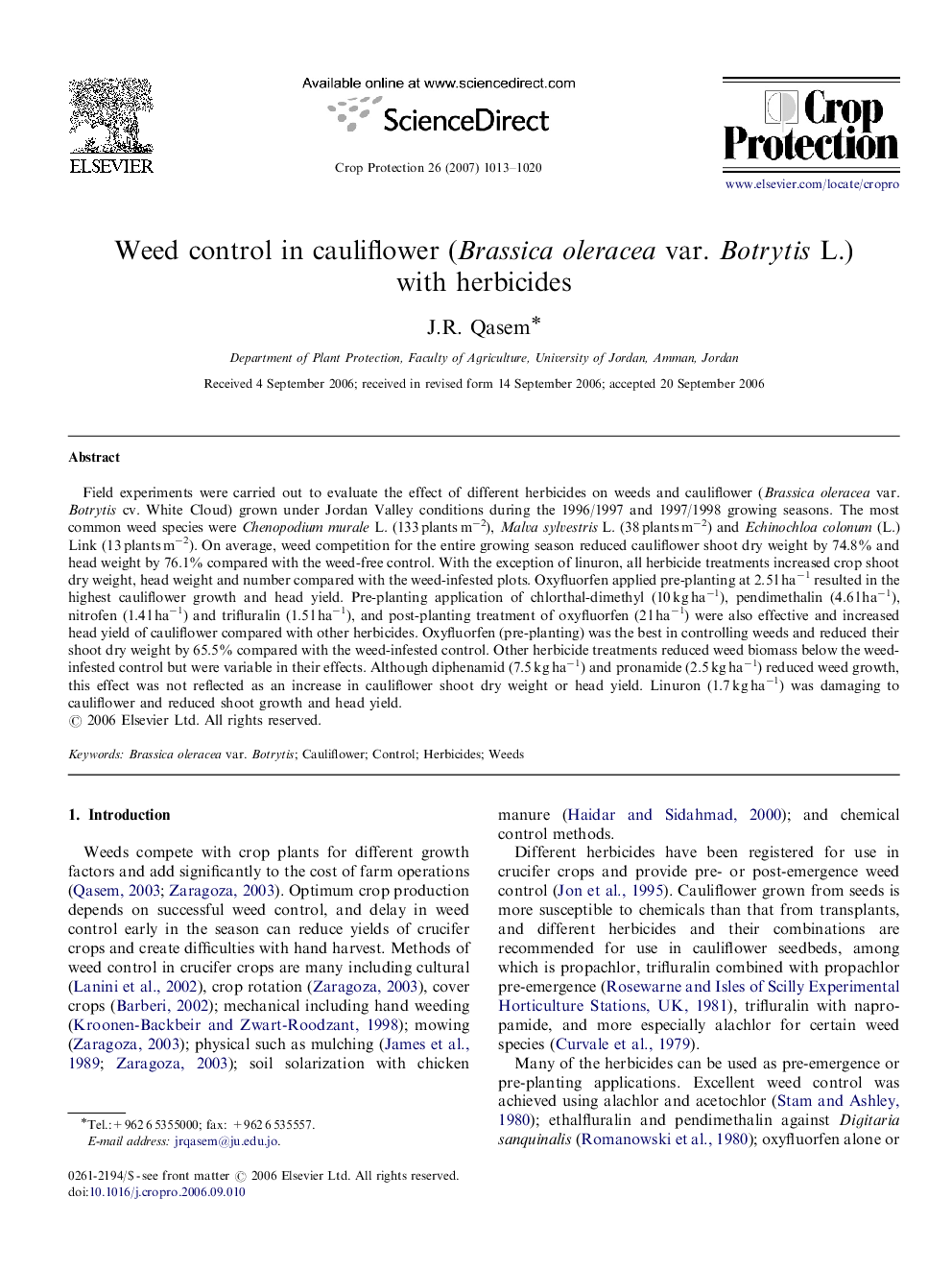| Article ID | Journal | Published Year | Pages | File Type |
|---|---|---|---|---|
| 4507850 | Crop Protection | 2007 | 8 Pages |
Field experiments were carried out to evaluate the effect of different herbicides on weeds and cauliflower (Brassica oleracea var. Botrytis cv. White Cloud) grown under Jordan Valley conditions during the 1996/1997 and 1997/1998 growing seasons. The most common weed species were Chenopodium murale L. (133 plants m−2), Malva sylvestris L. (38 plants m−2) and Echinochloa colonum (L.) Link (13 plants m−2). On average, weed competition for the entire growing season reduced cauliflower shoot dry weight by 74.8% and head weight by 76.1% compared with the weed-free control. With the exception of linuron, all herbicide treatments increased crop shoot dry weight, head weight and number compared with the weed-infested plots. Oxyfluorfen applied pre-planting at 2.5 l ha−1 resulted in the highest cauliflower growth and head yield. Pre-planting application of chlorthal-dimethyl (10 kg ha−1), pendimethalin (4.6 l ha−1), nitrofen (1.4 l ha−1) and trifluralin (1.5 l ha−1), and post-planting treatment of oxyfluorfen (2 l ha−1) were also effective and increased head yield of cauliflower compared with other herbicides. Oxyfluorfen (pre-planting) was the best in controlling weeds and reduced their shoot dry weight by 65.5% compared with the weed-infested control. Other herbicide treatments reduced weed biomass below the weed-infested control but were variable in their effects. Although diphenamid (7.5 kg ha−1) and pronamide (2.5 kg ha−1) reduced weed growth, this effect was not reflected as an increase in cauliflower shoot dry weight or head yield. Linuron (1.7 kg ha−1) was damaging to cauliflower and reduced shoot growth and head yield.
